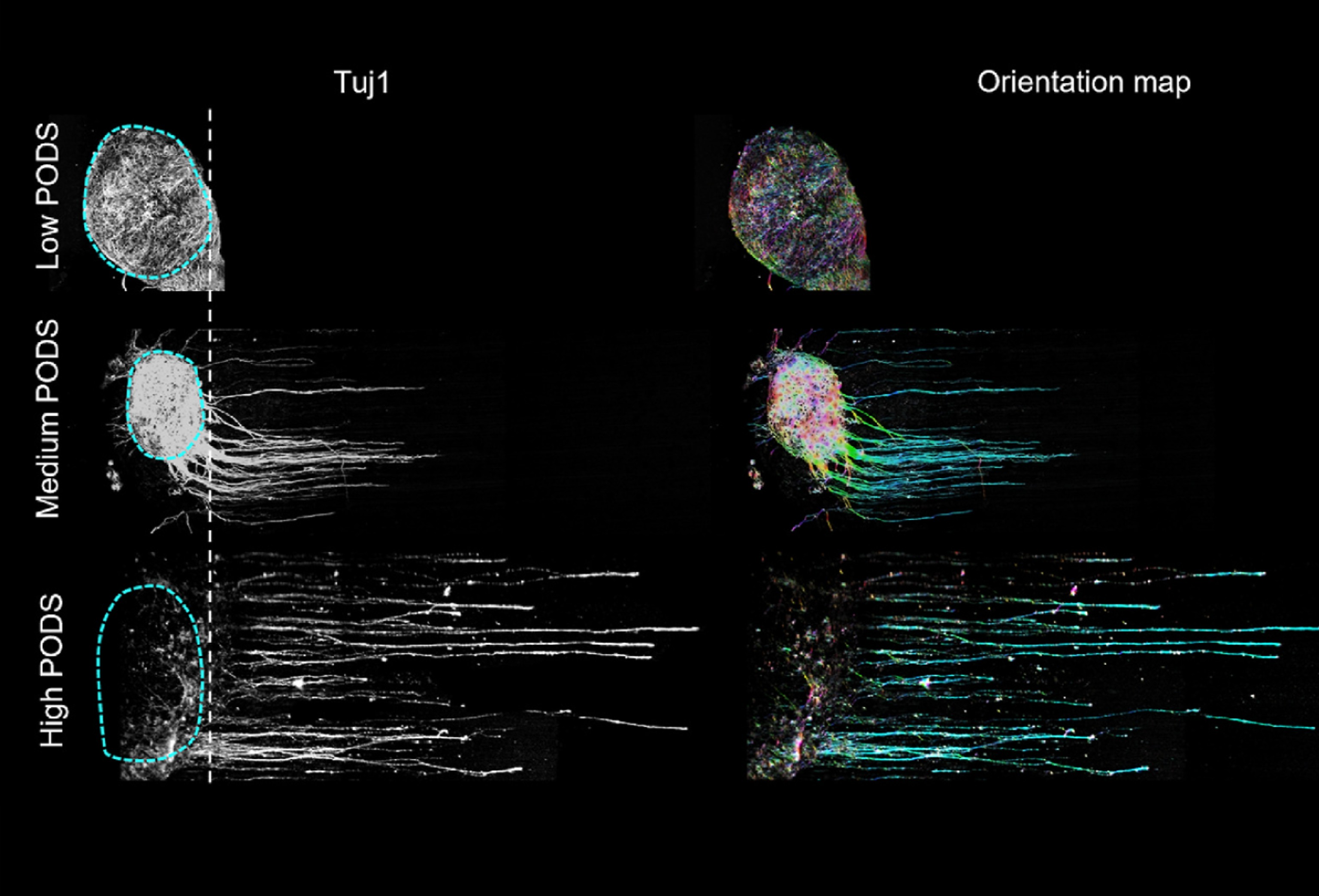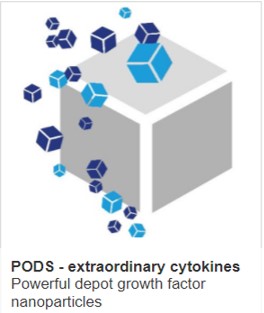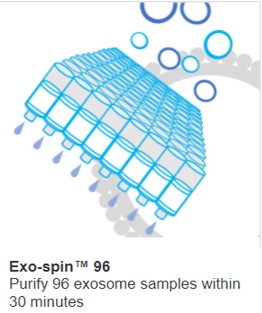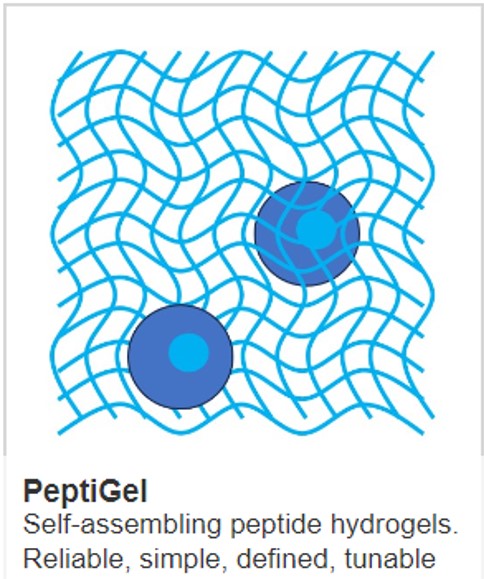Sustained-release growth factors for nerve repair conduits

Damage to peripheral nerves affects about 0.1% of the population each year. Failure to repair can result in lifelong disabilities. Nerve conduits are surgically implanted medical devices that encourage nerves to grow in the right direction to bridge gaps caused by injury, but are limited in the length of the defect they can span. Using lasers, hydrogels and sustained release neurotropic growth factors, researchers in Switzerland have developed a sophisticated nerve conduit system to repair non-union nerve damage.
Repairing damaged nerves presents several challenges. These include:
- Complexity of Nerve Structure: Peripheral nerves consist of numerous axons bundled together, each with specific functions. Repairing these nerves requires precise alignment and reconnection of these axons to restore function.
- Scar Tissue Formation: After an injury, scar tissue can form at the site, which can impede nerve regeneration and lead to incomplete recovery or neuroma formation.
- Limited Regenerative Capacity: While peripheral nerves have some ability to regenerate, this process is slow and often incomplete, especially over long distances or in severe injuries.
- Functional Recovery: Even if the nerve regenerates, achieving full functional recovery is challenging. Misalignment during repair can lead to incorrect reinnervation, where nerves connect to the wrong targets, causing loss of function or abnormal sensations.
- Time Sensitivity: The longer a nerve remains unrepaired, the less likely it is to recover fully. Delays in treatment can lead to muscle atrophy and permanent loss of function.
- Technical Surgical Challenges: Microsurgical techniques are required to repair nerves, which demand high precision and expertise. The complexity increases with the size and location of the injury.
- Vascular Supply: Ensuring adequate blood supply to the injured nerve is crucial for healing. Compromised vascularization can hinder the regeneration process.
- Patient-Specific Factors: Age, overall health, and the presence of comorbidities such as diabetes can affect the healing process and outcomes of nerve repair.
- Immune Response: The body’s immune response to injury can sometimes be detrimental, leading to inflammation that may further damage nerve tissues.
While there are advancements in biomaterials and nerve conduits to aid in nerve repair, finding the most effective materials and techniques that promote optimal nerve regeneration remains a challenge.
Filamented Light Biofabrication
The research group, led by Marcy Zenobi-Wong created filamented hydrogels using a technique called filamented light (FLight) biofabrication. This creates 3D matrices using photolithography with aligned microfilaments to support the growth and alignment of neurites from encapsulated dorsal root ganglion (DRG) cells. After fabrication, the DRGs (circular mass in image above) were placed at the end of the hydrogel, and the growth of neurons along the filmants was assessed.
Properties of these hydrogels, such as stiffness and porosity, were adjusted to optimize neurite outgrowth, with the best results observed at a stiffness of 0.6 kPa. The study emphasizes the importance of incorporating bioactive molecules, like nerve growth factor and laminin, to enhance neural development within the hydrogels.
With an eye on clinical translation, it was important to develop a system that would not require external support once surgically implanted. To achieve this, nerve growth factor (NGF) which is essential for neurite outgrowth was released from PODS (polyhedral protein assemblies containing bioactive proteins that are slowly released) encapsulated within the FLight hydrogel. The PODS were mixed with the photoresin used to create the hydrogel, allowing for the local release of NGF into the surrounding microenvironment as the cells within the hydrogel secreted proteases to degrade the PODS and release the cargo.
The use of PODS (polyhedral protein assemblies) in the FLight hydrogel offers several advantages:
- Sustained Release of Growth Factors: PODS allow for a controlled and localized release of nerve growth factor (NGF) and other bioactive molecules. This sustained release can enhance the effectiveness of growth factors in promoting neurite outgrowth and tissue regeneration.
- Biocompatibility: The incorporation of PODS into hydrogels ensures that the printing process remains biocompatible, minimizing any adverse effects on encapsulated cells and surrounding tissues.
- Enhanced Neurite Growth: Studies have shown that hydrogels containing PODS lead to improved neurite outgrowth compared to those without. This is particularly beneficial for nerve tissue engineering applications.
- Versatility: PODS can be formulated to encapsulate various growth factors, allowing for customization based on specific tissue engineering needs. This flexibility can facilitate the creation of gradients of growth factors within the hydrogel.
- Microstructure Integration: The size of PODS is comparable to the microstructures within the hydrogel, which can help maintain the structural integrity and functionality of the hydrogel while promoting cell interaction and migration.
- Potential for Multi-Functional Applications: By varying the types and concentrations of PODS, researchers can tailor the hydrogel properties for different applications, such as enhancing vascularization or supporting the growth of different cell types.
Overall, the use of PODS in FLight hydrogels represents a promising strategy for improving the efficacy of nerve repair and other tissue engineering applications.
Using this system, the researchers were able to generate neurites 4.5 mm in length in just a few days. The study demonstrated that the encapsulated NGF-PODS could sustain the release of NGF without the need for additional NGF in the culture medium. This approach allowed for a gradual and localized delivery of NGF, which is crucial for supporting neurite growth and guiding axon regeneration. The effectiveness of this release system was confirmed by measuring the concentration of NGF in the culture medium over time, showing that higher concentrations of NGF were detected from hydrogels containing a greater number of PODS.
IMAGE - Neurite outgrowth in Flight hycrogel dependent on PODS CREDIT: Zenobi-Wong lab (creative commons)
Learn more about powerful technologies that are enabling research:



